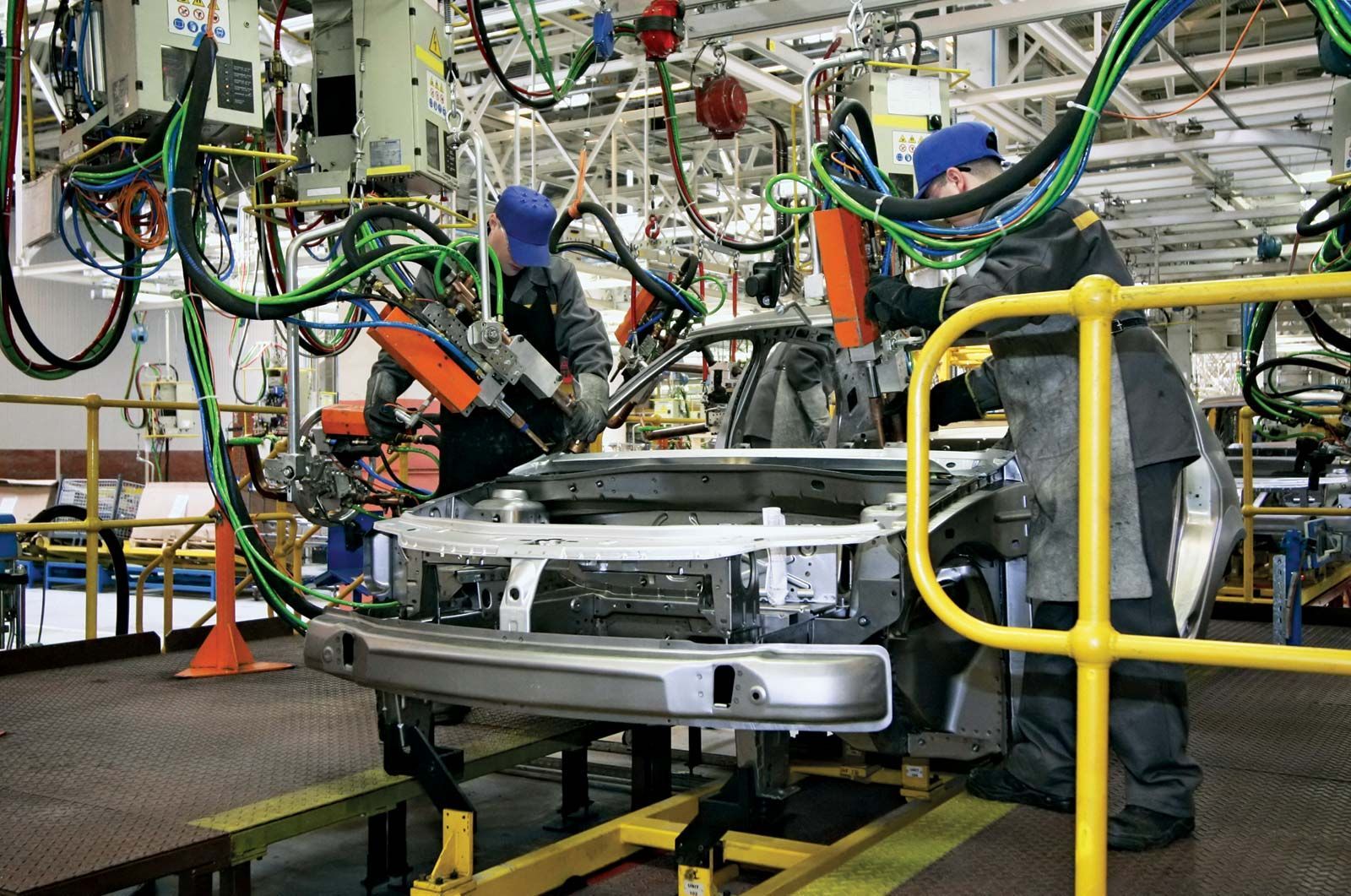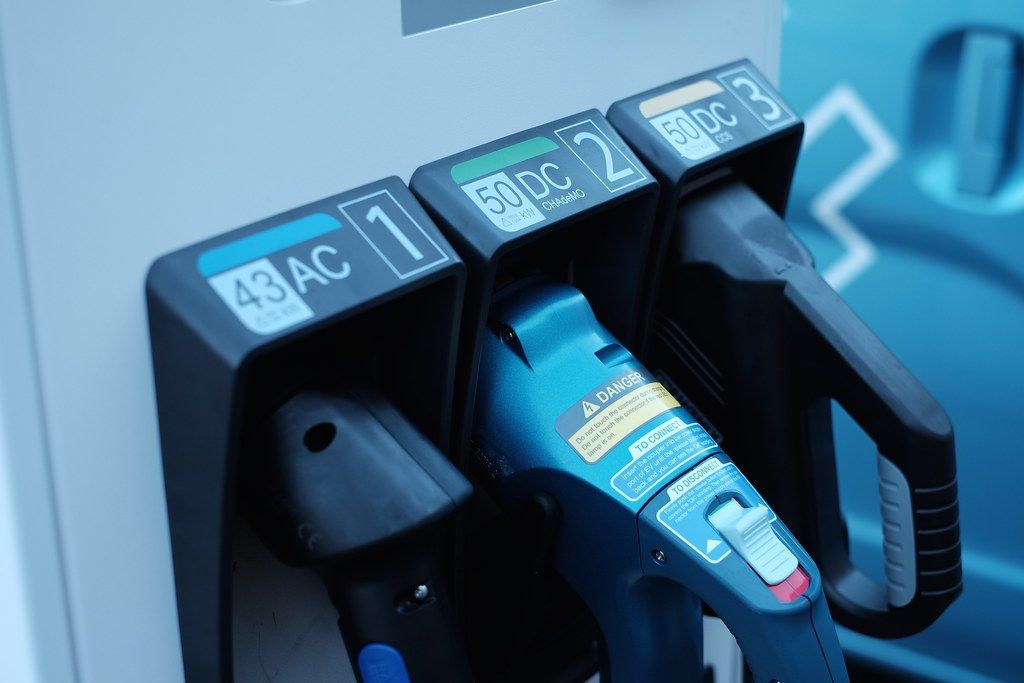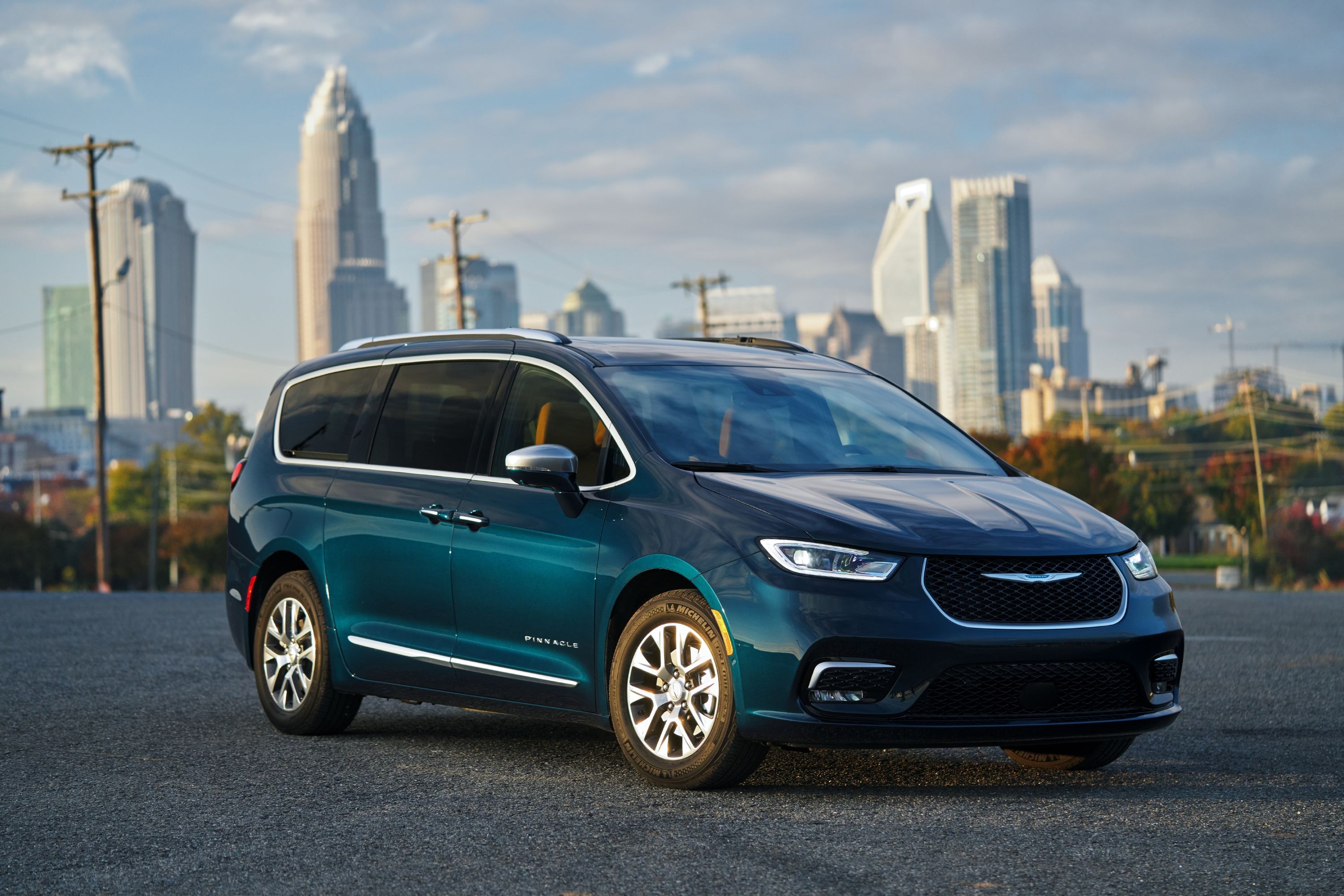
Electric vehicles (EVs) have made major strides in performance, range, and overall adoption, yet one crucial area continues to raise significant questions for prospective buyers: long-term longevity. While the automotive industry has decades of data on gas-powered vehicle durability, the EV market remains relatively young. This makes assessing long-term reliability challenging for many models, indicating that not all EVs are engineered to the same rigorous standards. This leads to a noticeable disparity in their ability to withstand the test of time and mileage.
Indeed, some EV models quietly and reliably cross the 200,000-mile mark with minimal battery degradation or drivetrain issues. Others, however, unfortunately begin to show significant signs of wear and tear, or even start falling apart, long before they ever hit 60,000 miles. With the accelerating global shift toward electrification, consumers are rightly paying closer attention to long-term value. EVs are frequently positioned as low-maintenance alternatives, but as real-world data increasingly shows, that promise does not always hold true across all models.
The issues plaguing less durable EVs are diverse, ranging from premature battery failure and failing infotainment systems to critical drivetrain defects and faulty charging modules. These problems underscore that not every EV was conceived or engineered with long-haul endurance in mind. To help consumers make informed decisions, this article dives into both ends of the EV durability spectrum. In this initial section, we will spotlight five electric vehicles that have unequivocally proven their ability to go the distance, providing consistent reliability and impressive efficiency long after their factory warranties have expired. Understanding which cars truly last, and why, is more important than ever.
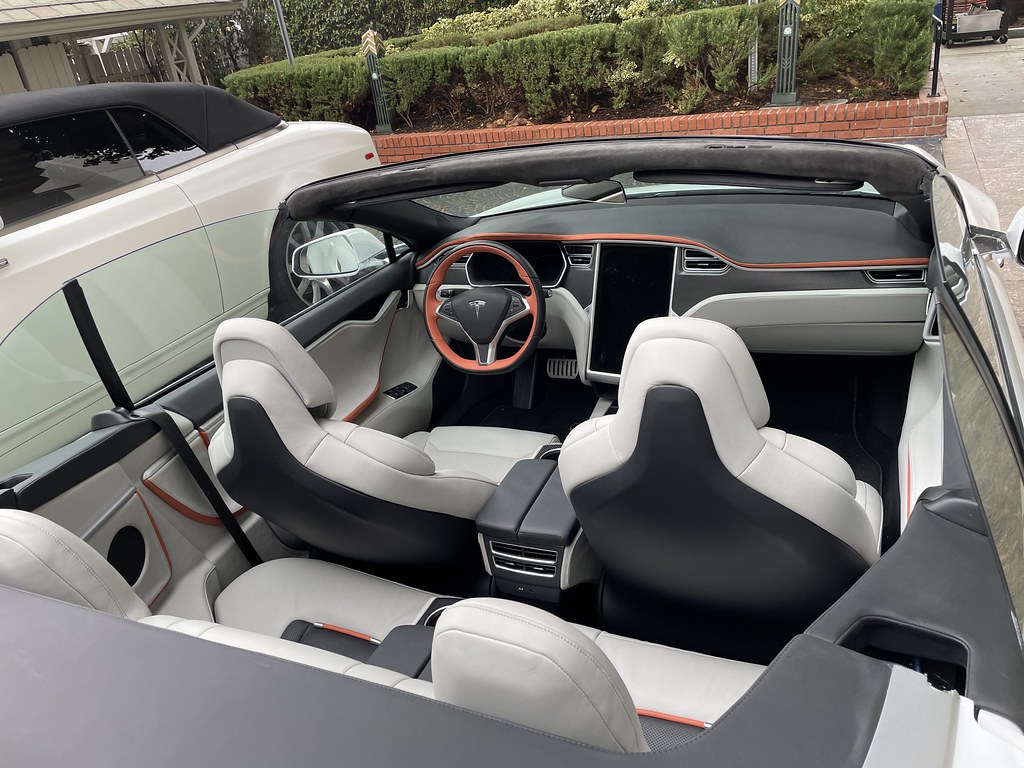
1. **Tesla Model 3**The Tesla Model 3 has become a benchmark for EV longevity, proving mass-market electric cars can endure extensive use. While known for performance and tech, its overlooked strength is how many Model 3s are confidently crossing 200,000 miles. This is achieved with minimal battery degradation and requiring only routine maintenance.
Real-world data from high-mileage owners and intensive fleet operators, like Uber and Lyft drivers, consistently demonstrates the Model 3’s exceptional resilience. Long Range and Rear-Wheel Drive variants show surprising durability. Many heavily used vehicles retain over 85–90% of original battery capacity even after 150,000 to 200,000 miles. This defies earlier skepticism about EV battery lifespans.
This remarkable endurance is largely due to Tesla’s sophisticated battery management system. This advanced system controls charging rates, regulates temperature, and optimizes state-of-charge behavior. This actively prevents wear, mitigates overheating, and prolongs battery health. Furthermore, the Model 3’s drivetrain simplicity contributes significantly to its low maintenance profile, requiring no oil changes or transmission fluid flushes.
Even brake pads last longer due to Tesla’s aggressive regenerative braking. While minor issues like early build quality inconsistencies or infotainment glitches exist, these are rarely mechanical. The Model 3’s core components—electric motors, inverter, and battery packs—are proving exceptionally resilient. Tesla’s continuous over-the-air (OTA) updates further enhance efficiency and fix bugs, extending the vehicle’s functional usability over time. For serious mileage, the Tesla Model 3 stands out as a reliable long-haul option.
Car Model Information: 2024 Volkswagen Tiguan 2.0T SE R-Line Black
Name: Tesla Model 3
Manufacturer: Tesla, Inc.
Production: 2017–present
Assembly: unbulleted list
Designer: Franz von Holzhausen
Class: Mid-size car
BodyStyle: Sedan (car)
Layout: unbulleted list
Related: Tesla Model Y
Motor: unbulleted list
Transmission: Single-speed fixed (9:1 ratio)
Battery: unbulleted list
ElectricRange: unbulleted list
Charging: unbulleted list
Wheelbase: cvt
Length: unbulleted list
Width: cvt
Height: unbulleted list
Weight: cvt
Caption: 2019 Tesla Model 3 Performance
Categories: 2020s cars, ANCAP large family cars, All-wheel-drive vehicles, All Wikipedia articles in need of updating, All Wikipedia articles written in American English
Summary: The Tesla Model 3 is a battery electric powered mid-size sedan with a fastback body style built by Tesla, Inc., introduced in 2017. The vehicle is marketed as being more affordable to more people than previous models made by Tesla. The Model 3 was the world’s top-selling plug-in electric car for three years, from 2018 to 2020, before the Tesla Model Y, a crossover SUV based on the Model 3 chassis, took the top spot. In June 2021, the Model 3 became the first electric car to pass global sales of 1 million.
A facelifted Model 3 with revamped interior and exterior styling was introduced in late 2023 for countries supplied by Gigafactory Shanghai and in early 2024 in North America and other countries supplied by the Tesla Fremont Factory.
Get more information about: Tesla Model 3
Buying a high-performing used car >>>
Brand: Tesla Model: Model 3
Price: $27,995 Mileage: 9,546 mi.
Read more about: Beyond the Blockbusters: Unpacking Jennifer Lawrence’s Astounding Car Collection, from Humble Beginnings to Hybrid Powerhouses
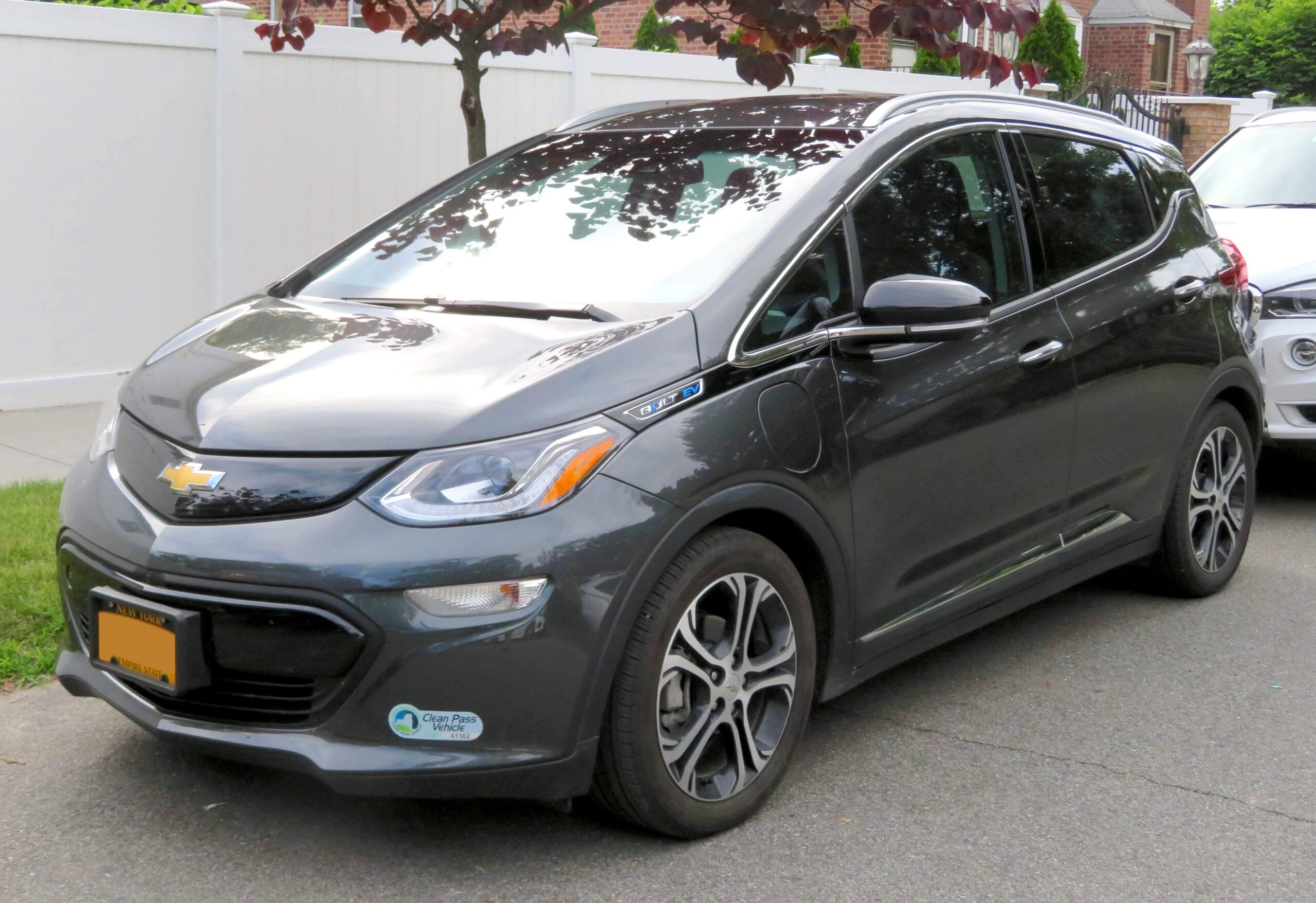
2. **Chevrolet Bolt EV**Despite navigating controversial early years and a highly publicized battery recall, the Chevrolet Bolt EV has proven itself as one of the most durable electric vehicles. It delivers what practical EV buyers prioritize: reliable, efficient, long-term service. Now that battery issues have been comprehensively addressed with full-pack replacements, the Bolt reemerged as a high-value, high-mileage workhorse.
Owners across North America report Bolts effortlessly surpassing 150,000 to 200,000 miles with little more than basic maintenance. This includes tire rotations, cabin filter replacements, and occasional brake servicing. Its effective regenerative braking system extends brake pad life well beyond typical expectations, contributing to low ownership costs.
The Bolt’s impressive longevity stems from its inherent simplicity. It features a single motor, direct drive transmission, and a meticulously calibrated thermal management system. This system efficiently maintains battery health, even during high usage or varying climates. General Motors’ conservative battery management software means the Bolt’s battery is rarely pushed to its limits, promoting long-term durability.
Many drivers observe less than 10% battery degradation after over 100,000 miles, with ranges nearly identical to new. The battery recall, while damaging to public perception, ironically provided older Bolts with a new lease on life via new battery packs. Interior wear is minimal for a sub-$40,000 EV, with solid build quality. Electronics, displays, and climate controls hold up well, and the basic infotainment is reliable after software patches. The Chevrolet Bolt EV is a compelling choice for an affordable EV capable of confidently exceeding 200,000 miles.
Car Model Information: 2024 Volkswagen Tiguan 2.0T SE R-Line Black
Name: Chevrolet Bolt EV
Caption: 2022 Chevrolet Bolt EV
Manufacturer: General Motors
Production: unbulleted list
ModelYears: unbulleted list
Class: unbulleted list
BodyStyle: unbulleted list
Layout: Front-engine, front-wheel-drive layout
Predecessor: Chevrolet Spark EV
Categories: 2020s cars, All Wikipedia articles in need of updating, All articles containing potentially dated statements, All articles to be merged, All articles with unsourced statements
Summary: The Chevrolet Bolt EV (marketed in Europe as Opel Ampera-e) is a battery electric subcompact hatchback manufactured and marketed by General Motors under its Chevrolet brand from late 2016 until late 2023, with a brief hiatus between mid-2021 and early 2022.
The first-generation Bolt was developed and manufactured with LG Corporation. Sales of the 2017 Bolt began in California in December 2016; it was released nationwide and international markets release in 2017. A rebadged European variant was marketed as the Opel Ampera-e in mainland Europe. In 2017, the Bolt was the second-best-selling plug-in car in the United States. It was named the 2017 Motor Trend Car of the Year, the 2017 North American Car of the Year, an Automobile magazine 2017 All Star, and was listed in Time magazine’s Best 25 Inventions of 2016. The Ampera-e was discontinued after 2018. By the end of 2020, GM had sold 112,000 Bolt and Ampera-e cars worldwide. The first-generation Bolt had been subject to at least three recalls due to battery fire risks.
In mid-2023, GM officials said they would discontinue the Bolt; after outcry, they announced plans for a next-generation model. The second-generation Bolt, based on the Chevrolet Bolt EUV, was unveiled on October 9, 2025 for model year 2027.
Get more information about: Chevrolet Bolt
Buying a high-performing used car >>>
Brand: Chevrolet Model: Bolt EV
Price: $27,995 Mileage: 9,546 mi.
Read more about: Beyond the Beta Label: Unpacking the Genuine Confusion and Critical Failures in Automotive Software-Defined Vehicles
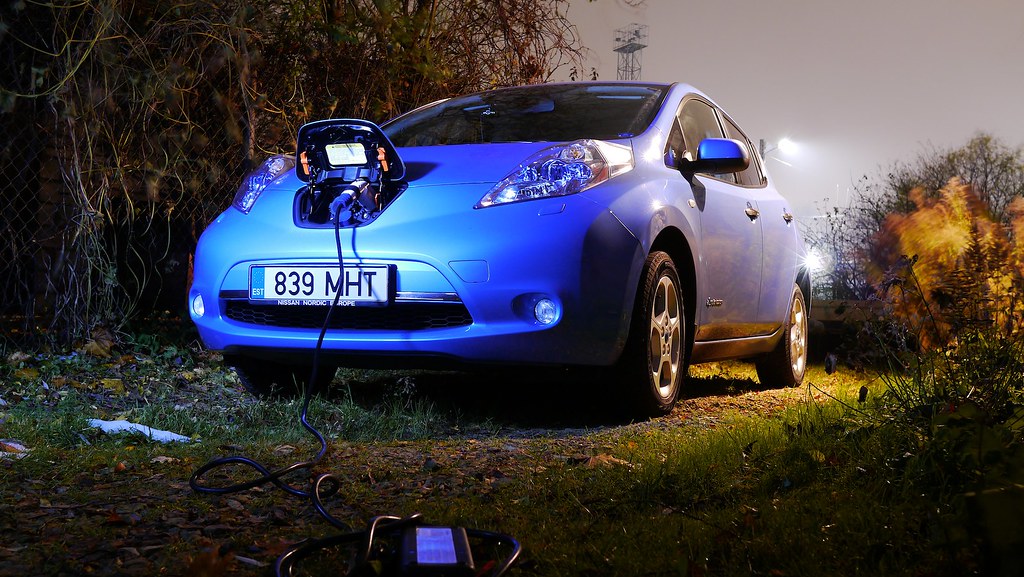
3. **Nissan Leaf**The Nissan Leaf, a pioneer of mainstream electric mobility since 2010, boasts over a decade of real-world data backing its reliability. Many early-generation Leafs still operate today, with some surpassing 200,000 miles. While not as flashy as newer models, the Leaf has quietly proven itself as one of the most dependably built electric vehicles.
A primary reason for the Leaf’s enduring durability is its straightforward simplicity. Its drivetrain is remarkably uncomplicated, refined by Nissan over many years. Models produced after 2013, especially the second-generation Leaf (2018 onward), incorporate improved battery management systems and enhanced thermal protection. These advancements contribute to better performance and extended long-term battery longevity.
Earlier Leaf models lacked active thermal battery management, which could accelerate degradation in hot climates. However, Nissan compensated with conservative software, limiting fast-charging speeds and preventing deep discharges detrimental to battery life. Consequently, in cooler climates or for urban commuting, many early Leafs still run robustly into high-mileage territory.
Newer Leaf Plus models, with a 62 kWh battery and enhanced electronics, show even greater endurance. They exhibit low battery degradation even after 100,000 to 150,000 miles, thanks to more robust internal cooling. Another benefit is the exceptional durability of its mechanical and cabin components. Suspension, steering, and HVAC systems are reliable, and basic interior materials age gracefully. Low maintenance costs are a bonus due to fewer moving parts. For dependable, no-frills electric transport that performs consistently for many years, the Nissan Leaf remains a compelling choice.
Car Model Information: 2024 Nissan Leaf SV PLUS
Name: Nissan Leaf
Caption: Third generation Nissan Leaf
Manufacturer: Nissan
Production: October 2010 – present
ModelYears: 2011–present
Class: Unbulleted list
BodyStyle: Unbulleted list
Layout: Front-engine, front-wheel-drive layout
Predecessor: Unbulleted list
Categories: 2020s cars, All articles containing potentially dated statements, All articles with dead external links, Articles containing Japanese-language text, Articles containing potentially dated statements from December 2015
Summary: The Nissan Leaf is a battery-electric car manufactured by Nissan, produced since 2010. It was offered exclusively as a 5-door hatchback which since then has become a crossover SUV model. The term “LEAF” serves as a backronym to leading environmentally-friendly affordable family car. The Leaf was unveiled on 1 August 2009 as the world’s first mass market electric and zero-emission vehicle. Among other awards and recognition, it received the 2010 Green Car Vision Award, the 2011 European Car of the Year, the 2011 World Car of the Year, and the 2011–2012 Car of the Year Japan. The Leaf’s range on a full charge has been steadily increased from 117 km (73 miles) to 364 km (226 miles) (EPA rated) by the use of larger battery packs and several minor improvements. As of September 2021, European sales totalled more than 208,000, and as of December 2021, over 165,000 had been sold in the U.S., and 157,000 in Japan. Global sales across both generations totalled 577,000 by February 2022. The Leaf was the world’s all-time top selling plug-in electric car until it was surpassed in early 2020 by the Tesla Model 3.
Get more information about: Nissan Leaf
Buying a high-performing used car >>>
Brand: Nissan Model: Leaf
Price: $19,888 Mileage: 12,431 mi.
Read more about: Avoid These Electric Cars Known for High Battery Replacement Costs
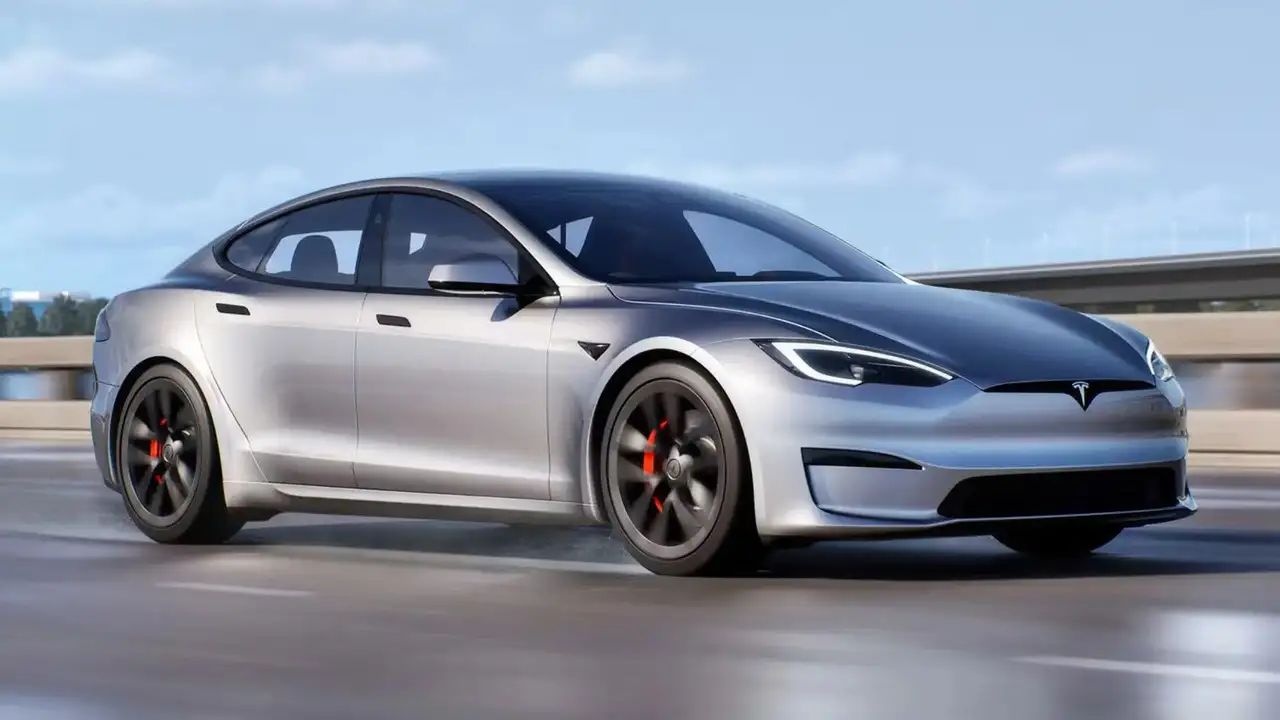
4. **Tesla Model S**The Tesla Model S represents a significant milestone, proving electric vehicles can truly endure the long haul. Since its 2012 debut, the Model S has consistently lasted well beyond 200,000 miles. Remarkably, some early-production units have logged over 300,000 miles with original drivetrains, and sometimes even their first battery packs.
A key factor in the Model S’s longevity is its blend of cutting-edge engineering and consistent over-the-air (OTA) support. Tesla shows commitment to older vehicles; even first-generation owners receive software updates refining features, improving range management, and optimizing battery efficiency. This sustained support keeps older Model S units feeling current, long after warranties expire.
Battery performance is central to EV viability, and the Model S’s liquid-cooled battery architecture provides a major advantage. With proper charging, most owners report less than 10% degradation after 150,000 to 200,000 miles. Tesla’s software actively manages temperature and charge levels to prevent wear, especially during Supercharging and in extreme climates.
Mechanically, the Model S has proven solid. While suspension and door handles were minor concerns on older models, the core powertrain—motor, battery, inverter—is robust. Regenerative braking reduces wear on traditional brakes, and fewer moving parts mean fewer breakdowns. Interior and electronic quality varied by year, but overall, the Model S holds up well. Its minimalist design reduces failure points, and Tesla’s mobile service streamlines repairs. For a long-haul EV with high range and proven endurance, the Tesla Model S is a high-mileage machine redefining electric ownership.
Car Model Information: 2024 Volkswagen Tiguan 2.0T SE R-Line Black
Name: Tesla Model S
ModelYears: 2013–present
Alt: A front-three quarter view of a gray Model S
Caption: #2016–2019: First major update
Designer: Franz von Holzhausen
Weight: cvt
Height: cvt
Width: cvt
Length: cvt
Wheelbase: cvt
ElectricRange: cvt
Battery: kWh,lithium-ion battery
Motor: Unbulleted list
Transmission: Reduction drive
Related: Tesla Model X
Layout: Rear-motor, rear-wheel drive,Dual-motor, all-wheel-drive,Tri-motor, all-wheel-drive layout
BodyStyle: liftback,sedan (automobile)
Class: Full-size car
Assembly: Unbulleted list
Production: June 2012 – present
Manufacturer: Tesla, Inc.
Sp: us
Chassis: Unibody
Categories: 2020s cars, All-wheel-drive vehicles, All Wikipedia articles written in American English, All articles containing potentially dated statements, Articles containing potentially dated statements from 2025
Summary: The Tesla Model S is a battery-electric, four-door full-size car produced by the American automaker Tesla since 2012. The automaker’s second vehicle and longest-produced model, the Model S has been described as one of the most influential electric cars in the industry. Car and Driver named it one of the best cars of the year in 2015 and 2016. Its various accolades include the Motor Trend Car of the Year Award in 2013.
Tesla started developing the Model S around 2007 under the codename WhiteStar, with Henrik Fisker appointed as lead designer for the project. After a dispute with Elon Musk, Tesla’s CEO, Fisker was replaced by Franz von Holzhausen who, by 2008, had designed the production Model S’s exterior. Tesla unveiled a prototype of the vehicle in March 2009 in Hawthorne, California. In 2010, Tesla acquired a facility in Fremont, California, to produce the Model S, which was previously owned by General Motors and Toyota. Series manufacture of the car officially began at the Tesla Fremont Factory in June 2012. Tesla carried out the final assembly for European markets at its facilities in Tilburg, Netherlands, between 2013 and 2021.
Constructed mostly of aluminum, the Model S shares 30 percent of its components with the Model X—a crossover SUV that was introduced in 2015. The Model S has undergone several updates during its production, the most prominent ones occurring in 2016 and 2021. These updates have usually included modifications to the motor, such as changes to power or torque, revised exterior elements, and refreshed interior features. One such change included the 2015 introduction of Tesla Autopilot—a partial vehicle automation advanced driver-assistance system. The 2021 update led to the introduction of the high-performance, three-motor Plaid—Tesla’s most powerful model.
In 2015, the Model S was the world’s best-selling plug-in electric vehicle. In 2012, it was included on Time’s list of the Best Inventions of the Year, and the magazine later included it on its list of the 10 Best Gadgets of the 2010s in 2019. In 2014, The Daily Telegraph described the Model S as a “car that changed the world”. Road & Track argued that, with the introduction of the Plaid and features such as the yoke steering wheel, Tesla managed to turn the Model S into “perhaps one of the worst [cars in the world]”.
Get more information about: Tesla Model S
Buying a high-performing used car >>>
Brand: Tesla Model: Model S
Price: $27,995 Mileage: 9,546 mi.
Read more about: Beyond the Blockbusters: Unpacking Jennifer Lawrence’s Astounding Car Collection, from Humble Beginnings to Hybrid Powerhouses
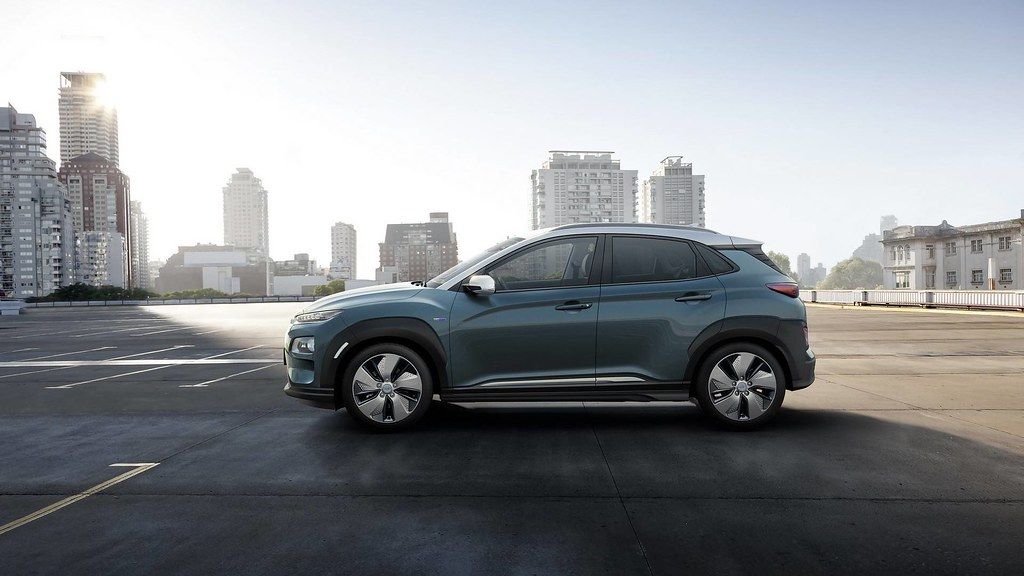
5. **Hyundai Kona Electric**The Hyundai Kona Electric may lack Tesla’s prestige or the Leaf’s legacy, but for durability, this compact crossover excels. Since its 2018 debut, the Kona Electric has earned a reputation for quiet, unwavering dependability. Many owners are now racking up 150,000 to 200,000 miles with little more than standard maintenance.
One significant strength is its balanced design. The 64 kWh liquid-cooled battery offers a practical real-world range of 250–270 miles. Its conservative thermal management and intelligent battery software extend long-term battery health. Reports indicate less than 10% battery degradation even after high mileage and frequent DC fast charging. This speaks to Hyundai’s well-executed thermal control strategy.
The powertrain—a single front-mounted motor delivering 201 horsepower—is remarkably reliable. It’s smooth, quiet, and doesn’t strain under normal use. Regenerative braking reduces wear on pads and rotors, and the direct-drive system means fewer mechanical components to wear out. The Kona Electric also develops few “nuisance” issues. The infotainment system is stable, connectivity solid, and it avoids buggy software common in its price range, contributing to hassle-free ownership.
Hyundai’s robust 10-year/100,000-mile powertrain and battery warranty provides significant reassurance. Many vehicles exceed these milestones without major claims. While not the flashiest EV, the Kona Electric is built with care. Interior materials age gracefully, controls remain responsive, and owners report few complaints even after years of use. It’s favored by fleet drivers needing efficient, hassle-free vehicles. For a dependable daily EV without luxury prices, the Hyundai Kona Electric delivers peace of mind, proving that smart engineering and a solid battery truly matter for longevity.
Not all electric vehicles (EVs) are built to last; for every EV that reliably surpasses 200,000 miles, another begins to fail prematurely, often as the factory warranty expires. While EVs are frequently marketed as low-maintenance, some models suffer from early wear, failing components, and frustrating software issues after 60,000 miles. Unlike gasoline cars, these problems often stem from tech, electronics, or poor build quality, not just the drivetrain. Many early EVs were experimental, with automakers still navigating battery integration and software. Some brands prioritized meeting emissions targets over designing for durability. This resulted in cars prone to electrical gremlins, significant battery degradation, or neglect before their time. This section spotlights five EVs known for falling short after 60,000 miles. Whether due to range loss, touchscreen failure, or charging system breakdowns, these vehicles often fail to provide expected long-term peace of mind. For used car shoppers or long-term owners, approaching these models with caution is essential.
Car Model Information: 2022 Toyota Tacoma SR5
Name: Hyundai Kona
Caption: Hyundai Kona N Line (SX2)
Manufacturer: Hyundai Motor Company
Aka: Hyundai Kauai (Portugal)
Production: 2017–present
ModelYears: 2018–present
Class: Subcompact crossover SUV
BodyStyle: SUV
Layout: ubl
Categories: 2020s cars, All-wheel-drive vehicles, All Wikipedia articles in need of updating, All Wikipedia articles written in British English, Articles containing Chinese-language text
Summary: The Hyundai Kona is a subcompact crossover SUV produced by the South Korean manufacturer Hyundai. The first-generation Kona debuted in June 2017 and the production version was revealed later that year. It is positioned between the Venue or Bayon and the Tucson in Hyundai crossover SUV line-up. The battery electric version called the Kona Electric (or Kona EV) was first launched in South Korea during the first half of 2018 and rolled out gradually worldwide afterwards.
Get more information about: Hyundai Kona
Buying a high-performing used car >>>
Brand: Hyundai Model: Kona Electric
Price: $25,987 Mileage: 57,020 mi.
Read more about: Avoid These Electric Cars Known for High Battery Replacement Costs
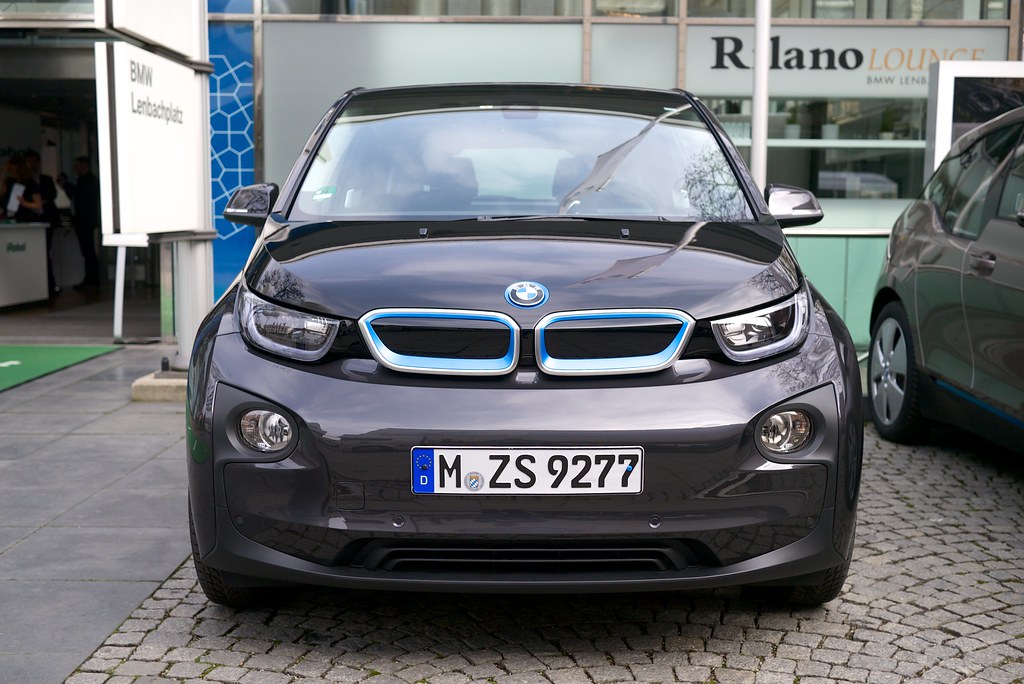
6. **BMW i3**The BMW i3 was one of the earliest premium electric vehicles, turning heads with its futuristic design and carbon-fiber construction. However, long-term ownership has exposed significant issues, particularly once it crosses the 60,000-mile mark. For many owners, this bold step into the electric future became a lesson in early-adopter regret.
The i3 suffers from rapid battery degradation, especially in earlier models. Owners report losing 20–30% of range by 60,000–80,000 miles, notably in warmer climates where the limited thermal battery management proves inadequate. With an original range just over 100 miles, any loss severely impacts usability.
The drivetrain also hasn’t aged well. Rear-axle noise, motor hum, and power delivery hesitation grow more common with mileage. Its unique narrow tires wear quickly and are expensive. Suspension components like bushings and control arms often require early attention.
Electronics are another weak point. The infotainment system becomes laggy and unresponsive with age, and Bluetooth/navigation bugs persist. Owners report display screen failures and sensor glitches (parking assist, traction control).
Repair costs can be steep. The i3’s exotic carbon-fiber-reinforced plastic body complicates repairs. Specialized parts are not always readily available, leading to higher labor bills and long service waits. While a trailblazer, the i3 is a risky bet for longevity beyond 60,000 miles.
Car Model Information: 2016 BMW i3 Range Extender
Name: BMW i3
Manufacturer: BMW
ModelCode: I01
Production: September 2013 – August 2022 (250,000 units)
Assembly: Leipzig
Successor: BMW iX,BMW iX1,BMW i4
Class: Supermini
BodyStyle: hatchback
Doors: Suicide doors
Layout: Rear-motor, rear-wheel-drive
Chassis: Carbon-fiber,Monocoque
Motor: BMW eDrive synchronous permanent magnet motor 125 kW
137 kW
Battery: kWh
ElectricRange: ampere hour,Convert,United States Environmental Protection Agency,Range extender (vehicle)
Engine: Straight-twin engine,range extender,9 L
Abbr: on
Transmission: Single speed with fixed ratio
Drivetrain: Series hybrid,plug-in hybrid,Range extender
Charging: Combo Coupler
Wheelbase: 2570 mm
Length: 3999 mm
Width: 1775 mm
Height: 1578 mm
Weight: 1195 kg
Sp: uk
Designer: Richard Kim (car designer)
ModelYears: 2014–2021 (North America)
Categories: All articles containing potentially dated statements, All articles with dead external links, Articles containing potentially dated statements from December 2019, Articles containing potentially dated statements from December 2021, Articles containing potentially dated statements from February 2014
Summary: The BMW i3 is an electric car that was manufactured by German marque BMW from 2013 to 2022. The i3 was BMW’s first mass-produced zero emissions vehicle and was launched as part of BMW’s electric vehicle BMW i sub-brand. It is a B-segment, high-roof hatchback with an electric powertrain. It uses rear-wheel drive via a single-speed transmission and an underfloor lithium-ion battery pack with an optional range-extending petrol engine.
Styled by Richard Kim, the i3 is a five-door with a passenger module of high strength, ultra-lightweight carbon fibre reinforced polymer adhered to an aluminium chassis, battery, drive system and powertrain. The body features two clamshell rear-hinged rear doors.
The i3 debuted as a concept at the 2011 International Motor Show Germany, and production began in September 2013 in Leipzig.
It ranked third amongst electric cars sold worldwide from 2014 to 2016. Its global sales totaled 250,000 units by the end of 2022. Germany was its biggest market with over 47,500 units delivered through December 2021, followed by the U.S. with over 45,000.
The i3 won two World Car of the Year Awards, selected as 2014 World Green Car of the Year and as 2014 World Car Design of the Year. The i3 received an iF Product Design Gold Award, and won UK Car of the Year 2014 and Best Supermini of 2014 in the first UK Car of the Year Awards.
Get more information about: BMW i3
Buying a high-performing used car >>>
Brand: BMW Model: i3
Price: $14,998 Mileage: 49,999 mi.
Read more about: Avoid These Electric Cars Known for High Battery Replacement Costs
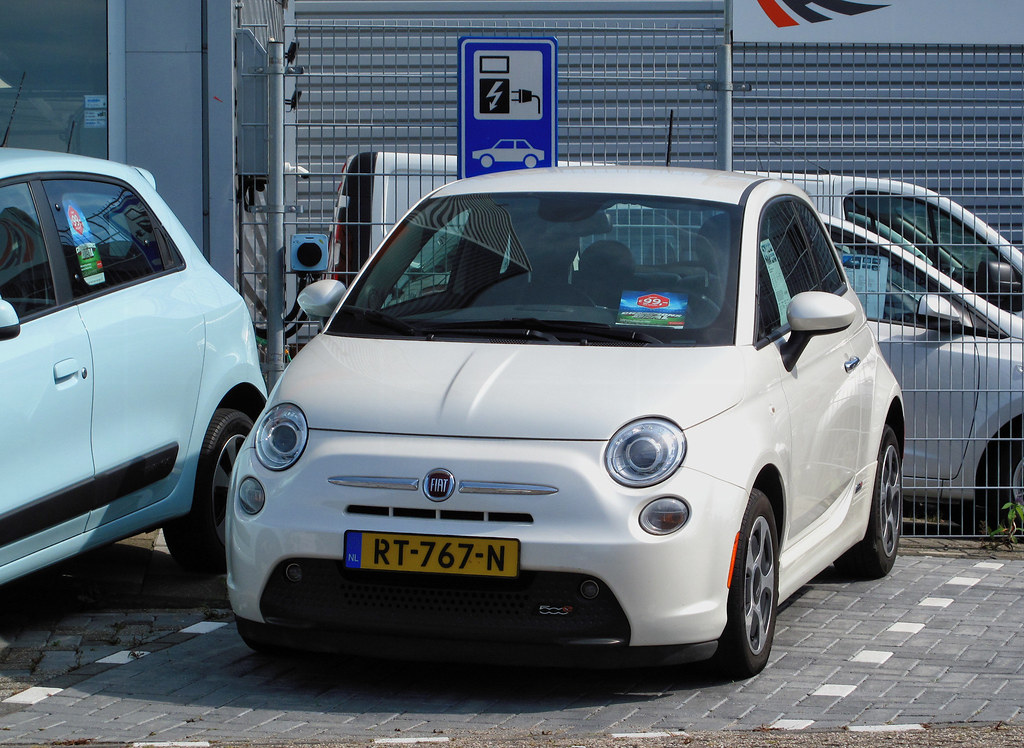
7. **Fiat 500e**The Fiat 500e was a “compliance car,” built primarily to meet California’s emissions requirements rather than redefine electric driving. Fiat even admitted selling it at a loss, reflecting a lack of emphasis on enduring reliability. While quirky and charming initially, the 500e has become notorious for reliability concerns past 60,000 miles.
Battery degradation is a common complaint. The 500e uses a small 24 kWh battery with no liquid thermal management, making it vulnerable to heat-related wear. Owners in warmer climates often report losing 20–30% of range before 70,000 miles. With an EPA-rated range of just 84 miles new, even minor losses severely limit practicality.
The powertrain, though zippy in urban settings, develops drivetrain noise and vibration over time. Some owners report reduced throttle response and odd regen behavior. The single-speed transmission has suffered from motor mount issues and occasional inverter faults, leading to costly repairs.
Electronics are another trouble spot. The basic infotainment system often becomes glitchy. Charging system malfunctions, dashboard display errors, and Bluetooth pairing issues are frequently cited. Even basic components like power windows, keyless entry, and climate controls can fail after 60,000 miles.
Part availability and service support have declined since Fiat exited the North American market. Finding replacements or competent EV technicians is challenging, and labor costs can quickly exceed the vehicle’s value. Many cheap used examples exist for good reason, making it a frustrating long-term EV solution.
Car Model Information: 2024 FIAT 500e Base
Name: Fiat 500e (New 500)
Manufacturer: Fiat
ModelCode: 332
Production: February 2020–present
ModelYears: 2020–present
Assembly: Fiat Mirafiori,Turin
Designer: Lorenzo Battisti, Dario Pellegrino at Centro Stile Fiat
Class: City car
BodyStyle: hatchback,cabriolet,4-door hatchback
Platform: STLA City
Motor: GKN Automotive G400 IPMS interior permanent-magnet synchronous motor
Battery: Lithium-ion battery
Powerout: {{cvt,70,kW,PS hp,0
ElectricRange: {{cvt,185,km,0,Worldwide harmonized Light vehicles Test Procedure
Charging: DC:,50nbspkW (24nbspkWh battery),85nbspkW (42nbspkWh battery),400nbspV 3-Phase AC: 11nbspkW,230nbspV AC: 6.6nbspkW,120nbspV AC: 3.3nbspkW
Wheelbase: cvt
Length: cvt
Width: cvt
Height: cvt
Weight: cvt
Predecessor: Fiat 500e (2013)
Sp: uk
Categories: 2020s cars, All Wikipedia articles written in British English with Oxford spelling, All articles with bare URLs for citations, Articles with bare URLs for citations from August 2025, Articles with short description
Summary: The Fiat 500e (project 332), also known as the 500 elettrica or New 500 is a hybrid or battery-electric car by Italian manufacturer Fiat as the third generation of its 500 city cars, following the original 500 (1957–1975) and second-generation 500 (2007–2024). The third-generation 500e is manufactured at the Mirafiori plant in Turin, Italy, starting in 2020, and was sold alongside the second-generation 500, which was manufactured in Tychy, Poland until 2024. It was scheduled to be launched at the Geneva Motor Show but that event was canceled due to the COVID-19 pandemic; it was launched on 4 March 2020 in Milan.
The 500e has a 320 km (199 mi) range on the European WLTP combined test cycle, and achieves 400 km (249 mi) on that test’s urban cycle, which is generally favourable toward electric vehicles (EVs). Most versions of the car are powered by an 87 kW (117 hp) electric traction motor, fed by a 42 kWh lithium-ion battery pack.
Get more information about: Fiat 500e
Buying a high-performing used car >>>
Brand: Fiat Model: 500e
Price: $21,591 Mileage: 1,572 mi.
Read more about: Beyond Mr. Bean: An Exclusive Look Inside Rowan Atkinson’s Storied Garage, Home to McLarens, Bespoke Rolls-Royces, and Racetrack Legends
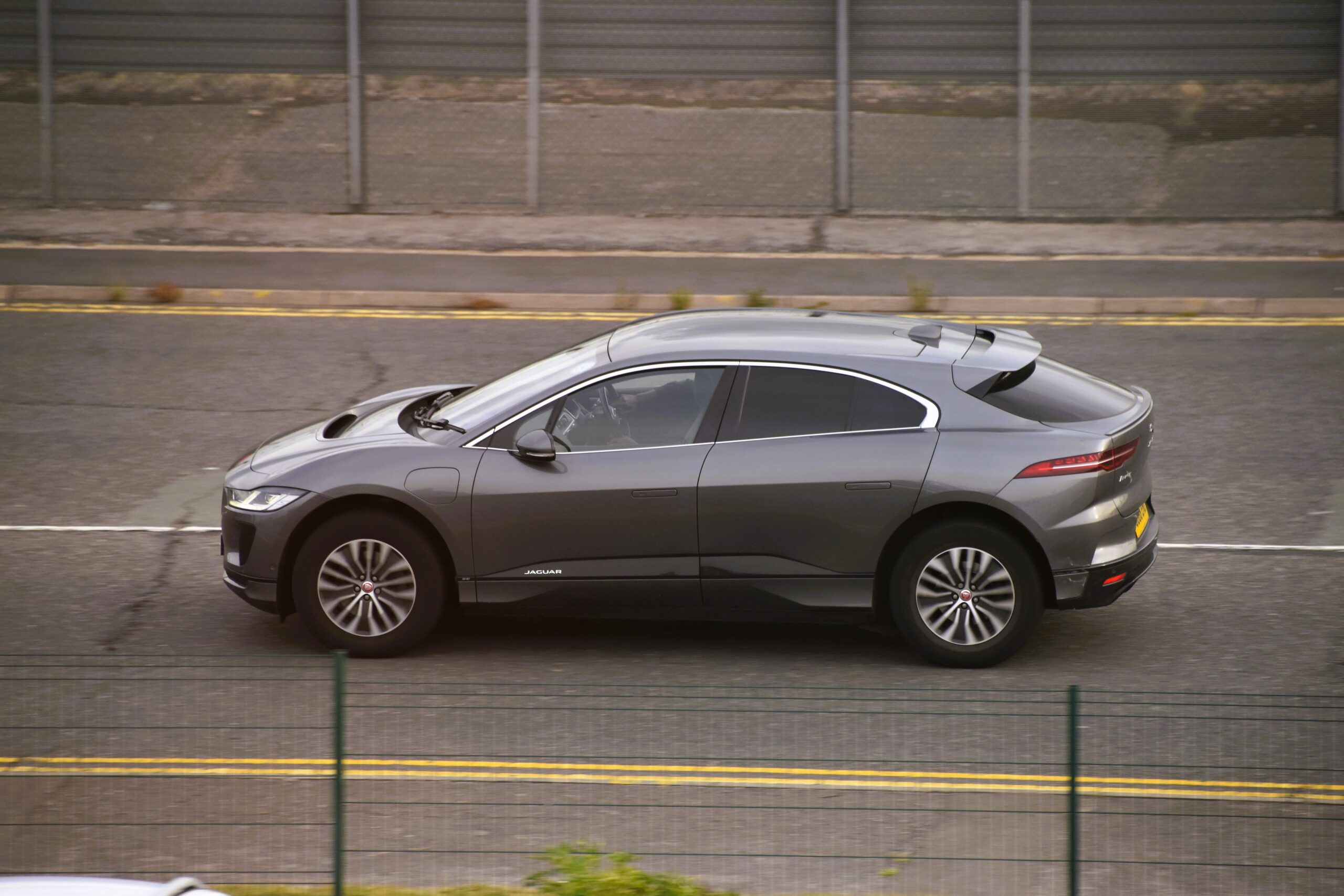
8. **Jaguar I-PACE**The Jaguar I-PACE was a bold move, a luxury performance SUV that placed Jaguar at the front of the EV curve in 2018. It won awards and offered impressive specs: 394 horsepower, all-wheel drive, and a 90 kWh battery for about 234 miles of range. However, while dazzling at launch, its long-term reliability often proves disappointing, with problems surfacing around the 60,000-mile mark, or even earlier.
The most glaring issues involve software and electronics. The I-PACE’s dual-touchscreen infotainment and advanced driver-assist systems are prone to freezing, crashing, or lagging. Apple CarPlay and Android Auto connections drop, and instrument clusters may reboot mid-drive. Over-the-air updates frequently fail to resolve bugs or introduce new ones.
On the hardware front, the charging system is a weak spot. Some units develop onboard charger faults, preventing home charging. DC fast charging slows with age, and owners report persistent issues with charger recognition or erratic charging speeds, often necessitating dealer visits for resets.
Battery thermal management has been another sore point. Despite a liquid-cooled system, early models suffered overheating during hot weather or repeated fast-charging, limiting performance and accelerating battery wear. Degradation has been concerning in some cases, particularly given the vehicle’s premium price.
Even mechanical components aren’t immune to premature wear. Owners report early suspension wear, noisy drive units, and rear differential issues. The all-wheel-drive system and heavy curb weight stress components, causing faster-than-expected wear for a luxury vehicle. Inconsistent EV expertise and parts availability within Jaguar’s service network further complicate repairs and costs.
Car Model Information: 2022 Jaguar I-PACE HSE EV400 AWD Automatic
Name: Jaguar I-Pace
Manufacturer: Jaguar Land Rover
Production: 2018–2024
Assembly: Magna Steyr
Designer: Ian Callum
Class: Compact crossover SUV#Luxury vehicles
BodyStyle: SUV
Layout: all-wheel-drive
Platform: Jaguar Land Rover car platforms#D7e
Motor: Permanent magnet synchronous motor
Abbr: on
Transmission: 1-speed direct-drive reduction
Battery: kW·h,Lithium-ion battery
ElectricRange: United States Environmental Protection Agency
Charging: 11kW AC (7.4kW “1-phase/32A only” AC 2018–2020),100 kW DC
Wheelbase: 2990 mm
Length: 4682 mm
Width: ubl
Height: 1565 mm
Weight: 2133 kg
Sp: uk
Categories: 2020s cars, All-wheel-drive vehicles, All Wikipedia articles written in British English, All accuracy disputes, All articles lacking reliable references
Summary: The Jaguar I-Pace (stylised as I-PACE) is a battery-electric crossover SUV produced by Jaguar Land Rover (JLR) under their Jaguar marque. The I-Pace was announced in March 2018, European deliveries began in June 2018 and North American deliveries started in October 2018. Amid slowing sales and a change in corporate vision, Jaguar has announced that the I-Pace will be discontinued by 2025.
Get more information about: Jaguar I-Pace
Buying a high-performing used car >>>
Brand: Jaguar Model: I-PACE
Price: $32,999 Mileage: 44,699 mi.
Read more about: Avoid These Electric Cars Known for High Battery Replacement Costs
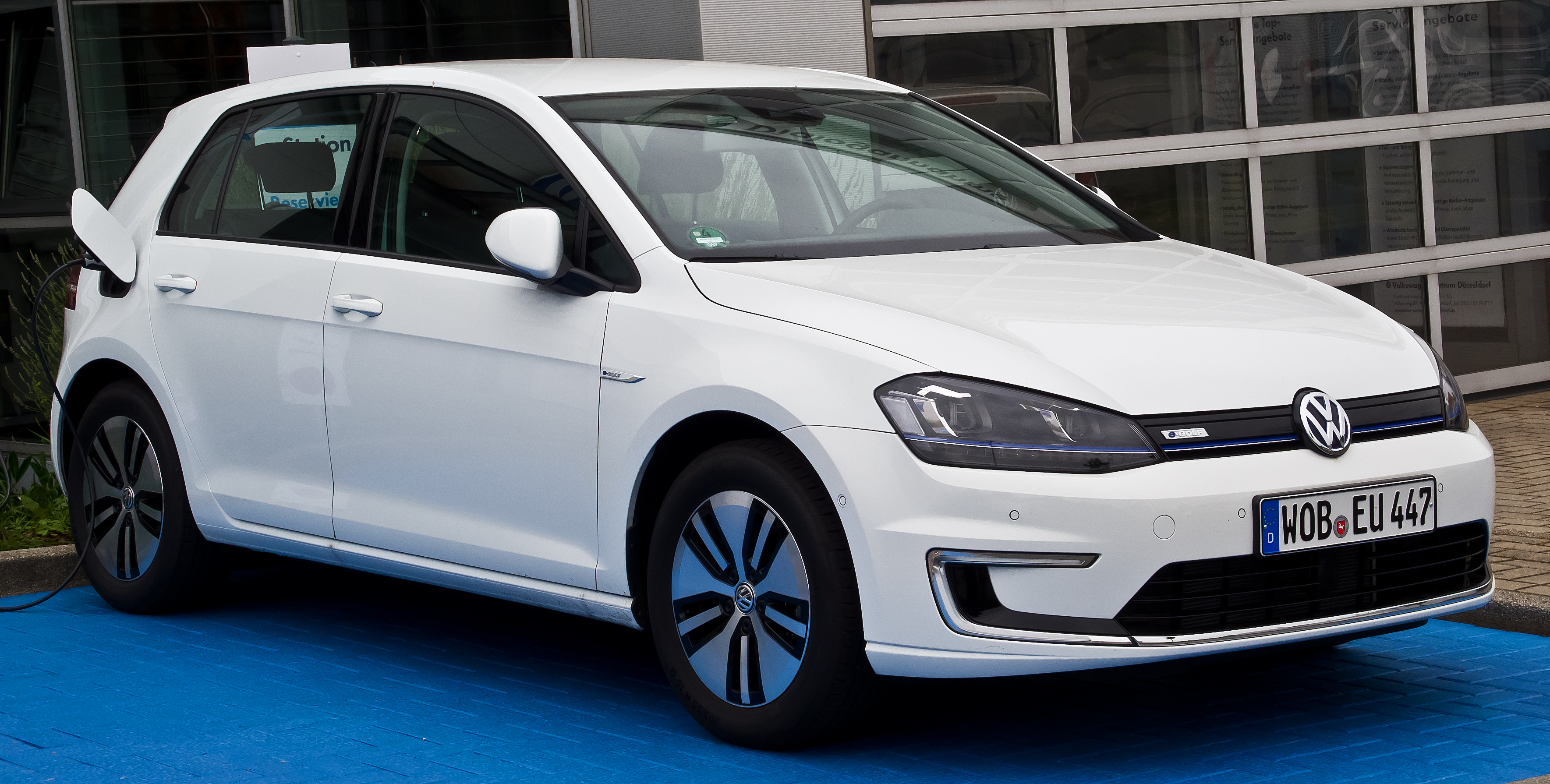
9. **Volkswagen e-Golf**The Volkswagen e-Golf was VW’s first serious entry into the EV space before the ID series. On the surface, integrating electric power into the familiar Golf platform seemed like a winning formula, offering a quiet, composed, and efficient driving experience for a few years. However, its long-term reliability has been a letdown, with significant wear appearing around the 60,000-mile mark.
Battery range degradation is a major concern. The e-Golf’s modest battery (24.2 kWh or 35.8 kWh) was fine for city driving when new, but owners frequently report losing 15–25% of range by 70,000 miles. With a real-world range of only 80–125 miles, even modest losses dramatically reduce usability.
Charging-related issues are also common. Many e-Golf owners experience problems with the onboard charger, such as random failures to charge or inconsistent rates. Some vehicles require the charger to be rebooted or reset via dealership service tools, leading to frustrating and time-consuming interruptions.
Electronics and infotainment reliability don’t fare much better. The touch interface, especially in earlier models, can become unresponsive or sluggish. Bluetooth pairing problems, frozen navigation screens, and system reboots are more common in higher-mileage units. The digital driver display can also develop flickering or dead pixels, posing a costly replacement.
Mechanically, the e-Golf shares much with its gas-powered siblings. Suspension and steering components are easy to source but may need replacement sooner than expected. Owners report worn bushings, creaking suspensions, and increased drivetrain noise after 60,000 miles – not catastrophic, but signs of aging faster than it should.
Car Model Information: 2018 Volkswagen e-Golf SE
Name: Volkswagen Golf
Caption: Volkswagen Golf Mk8
Manufacturer: Volkswagen
Production: 1974–present
Class: Compact car
Predecessor: Volkswagen Beetle
Successor: Volkswagen ID.3
Alt: grey car (hatchback)
Categories: 1980s cars, 1990s cars, 2000s cars, 2010s cars, 2020s cars
Summary: The Volkswagen Golf () is a compact car/small family car (C-segment) produced by the German automotive manufacturer Volkswagen since 1974, marketed worldwide across eight generations, in various body configurations and under various nameplates – including as the Volkswagen Rabbit in the United States and Canada (Mk1 and Mk5), and as the Volkswagen Caribe in Mexico (Mk1).
The original Golf Mk1 was a front-engined, front-wheel drive replacement for the air-cooled, rear-engined, rear-wheel drive Volkswagen Beetle. Historically, the Golf is Volkswagen’s best-selling model and is among the world’s top three best-selling models, with more than 35 million units sold as of 2019.
Initially, most Golfs were hatchbacks, with the three-door version being somewhat more popular than the five-door. Other variants include an estate (Variant, from 1993), convertible (Cabriolet or Cabrio, from 1979), and a Golf-based saloon called the Jetta, Vento (from 1992), or Bora (from 1999). The Golf covers economy to high-performance market segments.
The Golf has won awards, including the World Car of the Year in 2009, with the Mk6 and in 2013 with the Mk7. Along with the Renault Clio and the Vauxhall Astra, the Golf is one of only three cars to have won European Car of the Year twice, in 1992 and 2013. The Golf has made the annual Car and Driver 10Best list multiple times. The Mk7 won the Motor Trend Car of the Year award in 2015, and the Mk1 GTI also won the award in 1985. The Mk4 won for the best-selling car in Europe in 2001.
Get more information about: Volkswagen Golf
Buying a high-performing used car >>>
Brand: Volkswagen Model: e-Golf
Price: $14,499 Mileage: 35,058 mi.
Read more about: Smart Shopper Alert: 10 Affordable Hatchbacks That Turn into Costly Service Demons After Seven Years

10. **Mercedes-Benz B-Class Electric Drive**The Mercedes-Benz B-Class Electric Drive is one of the more obscure entries in the EV world, sold in limited numbers (2014-2017). Primarily a compliance car, developed in partnership with Tesla, it lacked the polish and durability of either brand’s core efforts. While carrying a Mercedes badge, long-term ownership reveals it’s far from a lasting investment, often unraveling after about 60,000 miles.
A major weakness lies in its battery system. Despite Tesla-supplied components, the B-Class ED suffers from degradation and software instability, leading to inconsistent range, long charging times, and unpredictable behavior. Owners report range losses of 25% or more by 70,000 miles, and the lack of robust thermal management makes it vulnerable in extreme climates.
Charging is another headache. The vehicle uses a less common 10 kW onboard charger that struggles with public infrastructure and occasionally refuses to charge entirely due to software communication errors. These bugs often require dealership visits, where many Mercedes technicians are not well-versed in supporting this niche vehicle.
Interior electronics also wear down quickly. The infotainment system, outdated and slow even when new, becomes glitchy as the vehicle ages. Climate controls, dashboard sensors, and basic power accessories like windows and locks are known to fail after moderate use. Electrical gremlins (random warning lights, non-functional regenerative braking, failing parking sensors) become common beyond 60,000 miles.
Mechanically, the B-Class ED doesn’t fare much better. Suspension wear, steering play, and drivetrain noise crop up earlier than in competing EVs. Parts are difficult to source, and labor costs are high, as most dealerships treat it as a low-volume oddity rather than a core Mercedes product. It’s a short-term commuter, not a long-term solution.
Read more about: Navigating the New Car Market: 15 Models That Don’t Justify Their Premium Price Tags for Smart Buyers
As electric vehicles become more mainstream, long-term durability is increasingly important, and real-world experience is separating lasting contenders from early failures. The EV promise—fewer moving parts, less maintenance, long-range efficiency—only holds true for certain models. Longevity, it turns out, is not a guarantee; it’s earned through smart engineering, quality components, and proven design. The five EVs that last beyond 200,000 miles—Tesla Model 3, Chevrolet Bolt EV, Nissan Leaf, Tesla Model S, and Hyundai Kona Electric—succeed by blending strong battery management with consistent build quality. These cars thrive with six-figure mileage, often retaining 85–90% original battery capacity and requiring only minor maintenance. They focus on fundamental reliability, and it shows. Conversely, vehicles like the BMW i3, Fiat 500e, Jaguar I-PACE, Volkswagen e-Golf, and Mercedes-Benz B-Class Electric Drive offer a cautionary tale. Often innovative or stylish at launch, these EVs show serious flaws after just 60,000 miles. Battery degradation, glitchy electronics, or poor service support make them expensive and unreliable to maintain, especially out of warranty. For budget-minded shoppers or second-hand EV buyers, these pitfalls can become major headaches.

